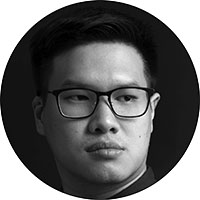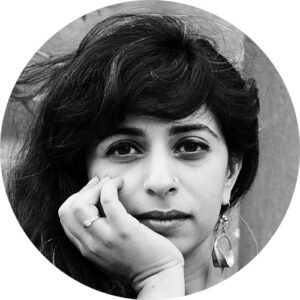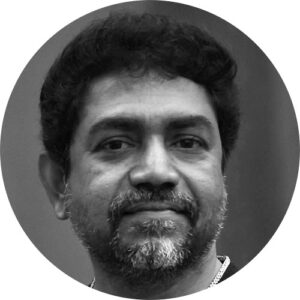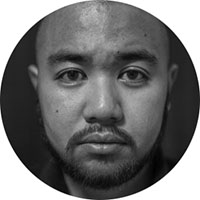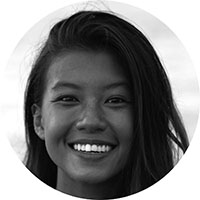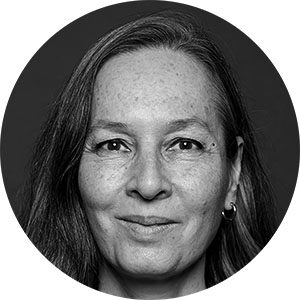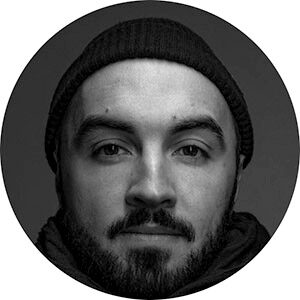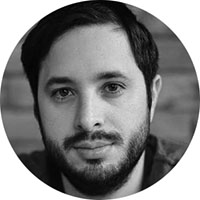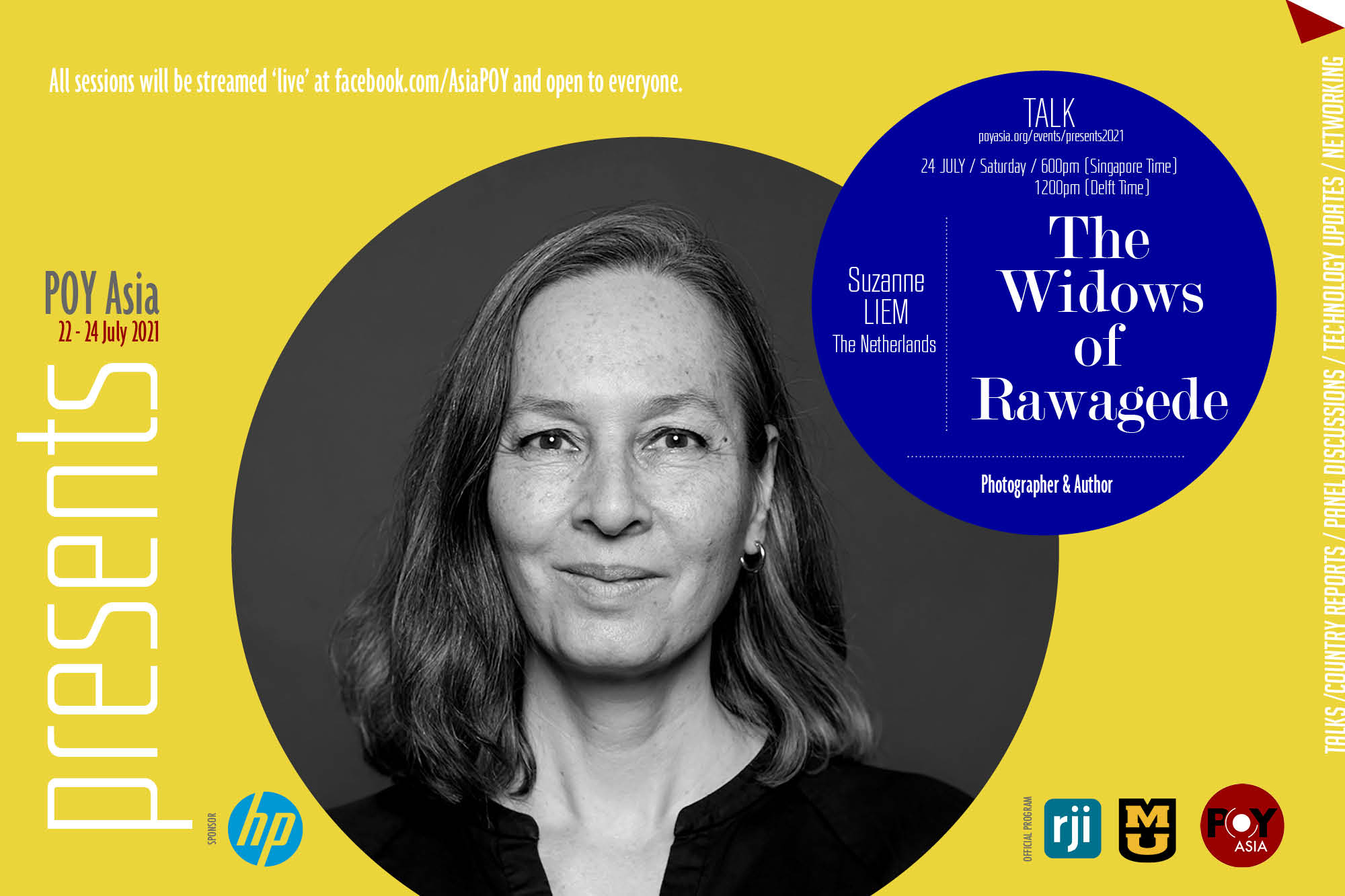
( Please visit regularly was we will be adding to the schedule as each presentation is confirmed )
Thursday, 22 July 2021
630PM
Singapore Standard Time
530PM
Jakarta Standard Time
Viral: The DNA of a Viral Image in a Post-Truth Landscape
30 minutes
When an image of a corpse, wrapped in plastic and a suspected victim of COVID-19, was published on Instagram by National Geographic, it went viral. Public reaction was intense, and photographer Joshua Irwandi’s photo received more than 350,000 likes and severe backlash. Irwandi, an Indonesian, was accused of staging the photo to spread fear, and he received violent abuse on social media, including being called a ‘slave’ of the World Health Organization. As a result, Irwandi’s initial work, which documented how COVID-19 was changing the procedures and lives of medical staff in Asia’s COVID-19 epicenter, was never published. Through this project, Viral, Irwandi will examine the transformation of journalism in the age of social media, and its threat to the role of journalism as a watching of democracy.
700PM
Taipei/Singapore Standard Time
Lightbox: Past, Present, Future
45 minutes
Started by a group of young Taiwanese artists and photography lovers in May 2016, Lightbox has grown to be an important cultural venue in Taipei. In its such history, this not-for-profit library specializing in photography books has collected more than 5000 books and played host to more than 200 talks, lectures and workshops. Lightbox’s original mission was to focus on Taiwanese photography as they found that “those interested in photography have no place to go for research, learning and discussion” but its collection is now international. As the key driver of Lightbox, Liang-Pin Tsao, an acclaimed photographer himself, will take us through the organization’s journey and share with us what the future holds for Lightbox.
745PM
Singapore Standard Time
515PM
New Delhi Standard Time
Ready, Off, Set
45 minutes
All over Asia, small groups are starting up organically with same mission – to promote and to make sure that good photography will always have a place. You don’t have to be big to make the difference, just do what your heart tells you. Forget the many categories and rules that are made for you as a photographer. Think about your own community and see how you can fill the vacuum. There is no one formula to success but what’s guaranteed is the joy of sharing and experimenting together. Anshika Varma, who founded Offset Projects in India, shares her own experience.
830PM
Singapore Standard Time
930PM
Seoul Standard Time
Be A Versatile Photojournalist
45 minutes
Growing up in South Korea, Wonsuk Choi was so fascinated by what his father did for a living that at a tender age of 12, he decided he wanted to be a photojournalist and photo editor, like his father. “My family never forced me to become a journalist.” In fact, they were hoping that he chose a ’more stable’ profession. “I always admired the journalism industry because of its nature; it deals with sensitive social issues and provides solutions. This was how I started.”
After studying and working in the USA for a decade, Wonsuk moved back to Seoul where he found himself in a very different work setting. “I have to find and choose the assignments for the day by myself. Sounds like I have a lot of control or freedom over my career, but also it comes with a lot of responsibilities. It took a while to adopt new normal at new newsroom.”
At The Korea Times where he has worked since 2014, Wonsuk always felt the use of images can be improved. He realised very early “that page designers can make a pages extra ordinary with ordinary photos.” After a lot of effort, he convinced his editors to let him take charge of a weekly page that is photography-centric. Now, his weekly routine involve three days of shooting and two days of editing and designing pages.
Wonsuk said, “I am always willing to change and to be flexible to become versatile.” This positive attitude resulted in him being in a unique working arrangement very few Asian visual storytellers have.
915PM
Singapore Standard Time
815AM
US Central Time
Another Kind of Family
30 minutes
A photographer who lives in Fort Leavenworth, Kansas with her husband and two young children, Arin exemplifies the spirit of ‘pointing the camera inward’. She is a military spouse and her current work deals with the everyday lives of military families. Often alone with their children when her husband is away on long assignments for the Army, the South Korea-born artist who immigrated to the US when she was five uses her camera to tell her story, as well as the stories of others.
Being an outsider in more ways than one, she believes in engaging her community and created “To Be At War”, a multifaceted effort to address the experiences of individuals in the military community whose lives are shaped by preparing for war, being at war, and processing the impact of war. Through photography workshops she led, she taught photography fundamentals to military spouses and children, but also provided a space for discussion and creative self expression.
She will speak about her ‘other family’ in this presentation.
1000PM
Singapore Standard Time
1000AM
US Eastern Standard Time
Lessons from a Small Newsroom
45 minutes
To many young photographers, Yehyun Kim’s career is like a sweet dream that never ends. Originally from South Korea where she had worked many jobs, including as a school teacher, Yehyun followed her goal and made her way to the highly competitive journalism industry in USA. After her graduate studies at the Missouri School of Journalism, Yehyun won the prestigious College Photographer of the Year title in 2020, an award which includes a hard-to-come-by internship at National Geographic.
Now the only visual journalist in CT Mirror, a small newspaper in the state of Connecticut, she faces new challenges. “My newsroom mainly covers politics and policy stories, which are not easy to make visually appealing, and I’m not often given visual assignments. I have to come up with work to do and ways to visualize stories.”
Rather than complain, she remains positive and wants to share the lessons she has learned.
“I am starting to make actions based on the lessons,” she says, “I can’t really tell what positive results I’ve seen from acting on the lessons, but I can at least share the lessons.”
Friday, 23 July 2021
600PM
Singapore Standard Time
400PM
Dhaka Standard Time
Picture Editor? What's That?
45 minutes
While Picture Editor and Director of Photography are common job titles and functions in western newsrooms, they are still relatively alien concept in Asia. Three years ago, when Abir Abdullah started a conversation with a potential employer about a possible leadership role in a newspaper in Dhaka, Bangladesh, he faced mammoth obstacles. In order to convince them that a picture editor plays very different (but important) roles compared to a chief photographer, Abir researched the industry and spoke with many professionals in the region. Even after becoming one of the first and few picture editors in his country, Abir also discovered that most colleagues in his newsroom were resistant and had no idea why their paper needed a visual champion.
645PM
Manila/Singapore Standard Time
Inside the World’s Longest COVID-19 Lockdown
45 minutes
On March of 2020, the Philippines was placed in what would be one of the longest lockdowns in the world in what the government says is an attempt to curb the spread of the coronavirus. According to the World Bank, the pandemic is expected to make 2.7 million more Filipinos slip into poverty on top of a record slide in the country’s GDP. Families remain separated as Filipinos fear of being shot dead in police quarantine checkpoints as ordered by President Rodrigo Duterte himself, while many healthcare workers have resigned out of fear and exhaustion as they bear the brunt of what many say has been a failed and overly militarized response to the pandemic. Amid a scarcity of accurate information on the pandemic, Duterte’s allies in Congress has achieved to shut down the country’s biggest TV network for critical reporting, while a new law has criminalized the spreading of “false information” which saw more than a dozen people investigated for expressing discontent online. Perhaps Duterte’s most significant attempt to quell dissent is his “Anti-Terrorism Act” which was rushed through Congress last year—a measure critics say is even more draconian than Hong Kong’s security law—and gave the executive sweeping powers to detain and interrogate without a warrant anyone the government deems a terrorist. These measures have led many critics to believe that the strongman is using the pandemic to tighten his grip on power and to fulfill his dream of placing the country under armed rule.
730PM
Manila/Singapore Standard Time
Changing Paradigms
45 minutes
The mode of production, dissemination, and consumption of visual images have already changed significantly the last few decades since the start of the digital revolution. As both producer and consumer of images, we are witness to how fast that evolution has been altering the landscape. While we acknowledge that the craft was brought to us by the West, at this point in time they no longer hold monopoly on how we create and look at images. Many issues around us which were once considered taboo before are now openly being discussed, called out and documented — like concerns about gender, racial discrimination, compensation, work ethics, sexual abuse or harassments, etc. Although many storytellers still want to cling on to old paradigms and practices, the desire to change is already screaming at us, and should be discussed as we all want to move forward with our craft.
815PM
Manila/Singapore Standard Time
Living Lullabies
45 minutes
‘Living Lullabies’ illuminates critical issues facing women and children through the multidisciplinary storytelling of families’ night-time rituals. It explores how caregivers prepare children for sleep in environments fraught with risk, and the unique role of the lullaby as a vector for sense- and place- making. The project follows families from around the world – mothers protecting their children from toxic air in Mongolia, families escaping conflict from Syria and taking refuge in Turkey, teen mothers relying on their communities in Liberia, families grappling with the climate crisis in the Philippines, and essential workers isolating from their children in the USA amidst the COVID-19 pandemic. This project aims to demonstrate how issues at the top of global agendas – conflict, migration, public health, and climate change – affect and are reflected in the stories of bedtime for children around the world. It was published in National Geographic Magazine in December 2020.
900PM
Manila/Singapore Standard Time
State of Photojournalism in the Philippines
45 minutes
What are the challenges facing Filipino visual storytellers today? Do they have a common ethical standard? What are the key social issues photojournalists and documentary photographers working in the Philippines hope to tackle? For those of us not in the Philippines, what are the similar obstacles we face and how can Asian visual storytellers collaborate?
Based on a recent survey spearheaded by Photojournalists’ Center of the Philippines, we ask three award-winning Filipino photographers to join us in this panel discussion.
More about the survey can be found at https://www.pcp.ph/survey
This presentation is in partnership with Photojournalists’ Center of the Philippines and National Union of Journalists of the Philippines. Many independent visual journalists, data analysts, and scholars also contributed to the creation of the survey and we want to thank everyone for allowing us to share it.
Saturday, 24 July 2021
600PM
Singapore Standard Time
1200PM
Delft Standard Time
The Widows of Rawagede
45 minutes
In 2008, Dutch photographer Suzanne Liem read a survey on discrimination against widows. Being a widow herself and a law graduate, she was shocked to read about the physical and mental abuse that widows have to endure in many countries, such as the lack of inheritance rights and property grabbing, compulsory marriage with a family member of the deceased husband, expulsion and sexual and other harming rituals. It is estimated that around 100 million widows live in poverty worldwide. To her, the situation of widows is, in effect, invisible.
It became her mission to show the world the specific problems the widows face, on top of their personal grief and the suppression and discrimination women endure in general so that NGOs and governments can become more aware of these violations of human rights and will take action.
Suzanne has photographed widows in various countries, such as India, where widows are excluded from remarriage and are expelled from society. In Spain, she encountered older widows demonstrate against their low pensions, taking to the streets of Barcelona once a month. In Italy, she heard stories of men committing suicide because of the crisis and leave their widows behind with financial problems. In The Netherlands, where the government is considering to drastically cut on state pensions for widows and widowers with children.
The Widows of Rawagede is a series of portraits she made in Indonesia in 2010. On the 9th of December 1947, nearly the whole male population of the village of Rawagede in Indonesia, was killed by Dutch soldiers during the Dutch police actions. In 2009, eight widows and the only male survivor of the massacre sued the Dutch government. This set of photos and the accompanying personal statements of the widows were published extensively nationwide in The Netherlands and have contributed to them winning their lawsuit in 2011.
645PM
Singapore/Beijing Standard Time
The Final Days of the Lockdown in Wuhan
45 minutes
On January 23, 2020, Wuhan, the Covid-19 pandemic’s ground zero and a Chinese city of more than 11 million had been sealed off from the rest of the world in an attempt to limit the coronavirus outbreak’s spread. Planes and trains leaving the metropolis were canceled, highway entrances were shut down, people couldn’t get in or out. Within Wuhan, public transport was suspended. In humans history, such a big lockdown had never been attempted. The beginning of lifting the lockdown began on March 28 when the city was partly re-opened only allowing people to enter the city. And on April 8, after 76 days Wuhan ended its strict lockdown giving a huge relief to all citizens. At that time according to China’s officials over 2500 people died from COVID-19 in Wuhan, and more than 50,000 coronavirus cases were recorded. Later the city’s death toll was raised by 50 percent, although the number was still much disputed among experts and world leaders. When Wuhan, was reopening to the outside world the novel coronavirus outbreak has been already declared as a global pandemic by The World Health Organization (WHO), with over a million infections and thousands of deaths worldwide at that time.
730PM
Singapore Standard Time
230PM
Jerusalem Standard Time
Visual Storytelling in Portrait Photography
45 minutes
“A good portrait tells a story” — But how do we tell a story in a portrait, and whose story are we telling?
For the past seven years, photographer Oded Wagenstein has been using the camera to share the stories and voices of elders from different communities around the world — from nomadic communities living in Northern Siberia, Russia, to those from the LGBTQ community living in Israel. Throughout this journey, he met with dozens of people who agreed to open their homes and share their heartfelt stories.
However, in the age of smartphones, it has become significantly easier to take a photograph and we live in an era where many scenes have been photographed before. What then continues to make a portrait meaningful? This presentation would involve the discussion of the visual elements in a powerful portrait, practical advice on crafting your visual style, and finding the next story to tell.

